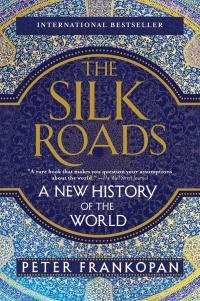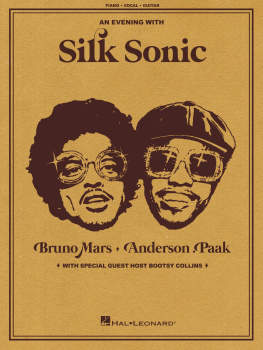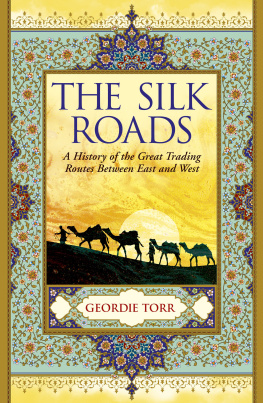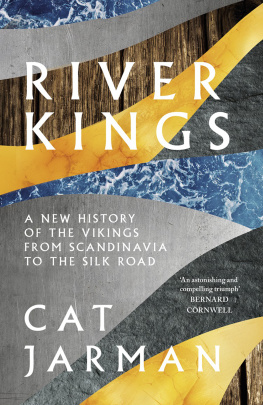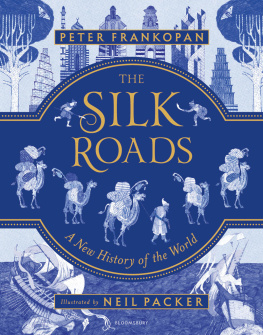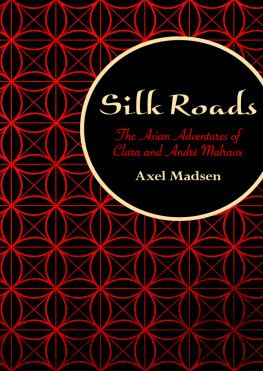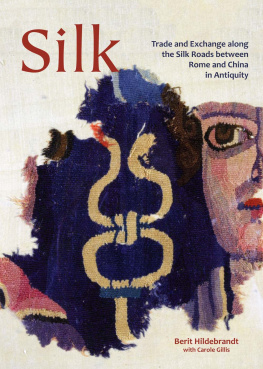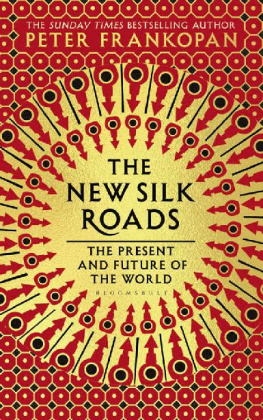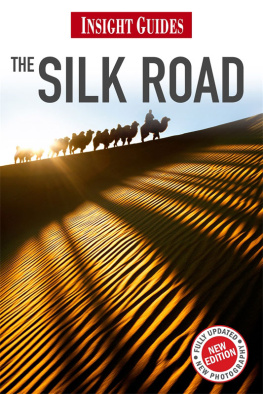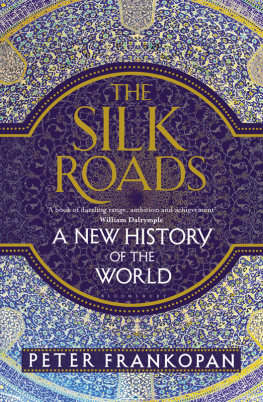THE NEW SILK ROADS
To Louis Frankopan,
my glorious and beloved father
(19392018)
THE NEW
SILK ROADS
The Present and Future
of the World
PETER FRANKOPAN

Contents
When The Silk Roads: A New History of the World was published in 2015, it touched a nerve. As an author, naturally I hoped that people would read and enjoy what I had written; as an academic historian, though, I had long found out that things I wanted to work on frequently had limited appeal to others. Conversations about my research at drinks parties and dinners did not often last for long, and even with my colleagues, engagement was usually directly linked to periods or regions of mutual interest.
The success of The Silk Roads therefore took me by surprise. It turned out lots of people did want to learn more about the world, just as I had done when I was young. I was not the only one, after all, who wanted to learn about other peoples, cultures and regions that had enjoyed glorious times in the past that had been washed away by the insistent story of more recent histories. It quickly became apparent that moving the centre of focus away from the familiar story of Europe and the west to Asia and the east came as a breath of fresh air for many readers.
So too did looking at the role of the connections that have linked continents together for millennia. In the late nineteenth century, the German geographer Ferdinand
Richthofens concept of the Silk Roads was vague in terms of identifying a precise geographic scope of how goods, ideas and people moved between Asia and Europe and Africa, and explaining quite how the Pacific Ocean and South China Sea were connected with the Mediterranean and, ultimately, the Atlantic. In fact, the looseness of what is meant by the Silk Roads can also be helpful not least because they were not roads in the modern meaning of the word or because they obscure the difference between long- and short-distance trade, or even because many other goods and commodities besides silk were also traded and in some cases in greater volume than expensive textiles.
In fact, the Silk Roads serves as a term that describes the ways in which people, cultures and continents were woven together and in doing so help us better understand the way that religions and languages spread in the past, while showing how ideas about food, fashion and art disseminated, competed and borrowed from each other. The Silk Roads help make clear the centrality of the control of resources and of long-distance trade, and therefore explain the contexts and motivations for expeditions across deserts and oceans that helped fashion the rise of empires. The Silk Roads show how technological innovation was stimulated across thousands of miles, and how violence and disease often followed the same patterns of destruction. The Silk Roads allow us to understand the past not as a series of periods and regions that are isolated and distinct, but to see the rhythms of history in which the world has been connected for millennia as being part of a bigger, inclusive global past.
If I had written The Silk Roads twenty-five years ago, it would have been equally topical. In the early 1990s, the Berlin Wall came down and the Soviet Union collapsed, prompting major upheaval not only in Russia but in all the fifteen constituent republics that subsequently became independent. The early 1990s too marked the First Gulf War that was so closely linked to the subsequent intervention in Iraq at the start of the twenty-first century. It was a time of profound change in China, where a series of reforms was about to propel the countrys emergence not as a regional but a global superpower. Winds of change were also blowing in Turkey, India, Pakistan, Afghanistan, Iran and across the Middle East then because that is what always happens along the Silk Roads, the networks that are the worlds central nervous system.
A few weeks after my book was published in the summer of 2015, I had lunch with a friend in London who was one of the first to read it. I found it strangely comforting, he said. It made me realise that change is normal, that big shifts in the global centre of power are quite common, and that this chaotic and unfamiliar world is perhaps not so strange and unusual after all.
*
Even in the few short years since The Silk Roads was published, much has changed. From my perspective as a historian there have been a series of advances in how we can understand the past that are immensely exciting. Scholars working in different fields, on different periods and regions have produced work that is as innovative as it is compelling. Archaeologists using satellite imagery and spatial analysis have identified irrigation systems made up of cisterns, canals and dams dating to the fourth century ad that explain how crops were grown in inhospitable conditions in north-western China at a time when exchanges with the world beyond were beginning to rise.
Data from commercial and spy satellites, as well as from drones
Advances in scientific methodology have also shed new light on the relationship between nomads and those living in cities in the pre-modern era in the heart of Asia. Analysis of carbon and nitrogen isotopes on seventy-four human remains from fourteen burial grounds in Central Asia help reveal the distinct dietary habits of those who lived in settled as opposed to nomadic communities while also suggesting that nomads enjoyed a wider variety of foodstuffs than those who lived in villages, towns and cities. This in turn raises important questions about the role played by mobile populations in introducing new trends and spreading cultural change across hundreds and sometimes thousands of miles.
Genetic and ethno-linguistic evidence has meanwhile been used to show how the spread of walnut
Then there is new research that links the origins of Yiddish
Documents declassified in 2017 recording meetings held between the British minister in Washington in 1952, Sir
These are just a small number of examples to show how historians continue to use different techniques to refine and improve their understanding of the past. This is what makes history such an invigorating and exciting subject: there is a thrill in being prompted to think about things in a different way, and also discover connections that link peoples, regions, ideas and themes together. The excitement of understanding how new discoveries, new tools and new techniques help illuminate the past is what made writing The Silk Roads such a joy in the first place.
This book is a sibling to the earlier one. Given how the world has changed in the last few years, I originally wanted to add a chapter to sharpen the conclusion and bring it up to date. I wanted to explain that however traumatic or comical political life appears to be in the age of Brexit, European politics or Trump, it is the countries of the Silk Roads that really matter in the twenty-first century. I wanted to show that the decisions being made in todays world that really matter are not being made in Paris, London, Berlin or Rome as they were a hundred years ago but in Beijing and Moscow, in Tehran and Riyadh, in Delhi and Islamabad, in Kabul and in Taliban-controlled areas of Afghanistan, in Ankara, Damascus and Jerusalem. I wanted to remind the reader that the worlds past has been shaped by what happens along the Silk Roads. And I wanted to underline that so too will its future.
As I started to write, I realised that I wanted to say more than an epilogue could (and probably should) try to say. Rather, I thought that it was important to provide a detailed snapshot of contemporary affairs, but through a wide lens in the hope of providing context for what is going on around the world, and also to highlight some of the themes on which all our lives and livelihood depend. The Silk Roads lie at the heart of this picture so central, in fact, that it is not possible to make sense of what today and tomorrow have in store without taking the region lying between the Eastern Mediterranean and the Pacific into account. This book is therefore intended to bring the story up to date and to interpret what has happened in the last few years at a time of profound transformation.
Next page

